Packard (1899-1958)
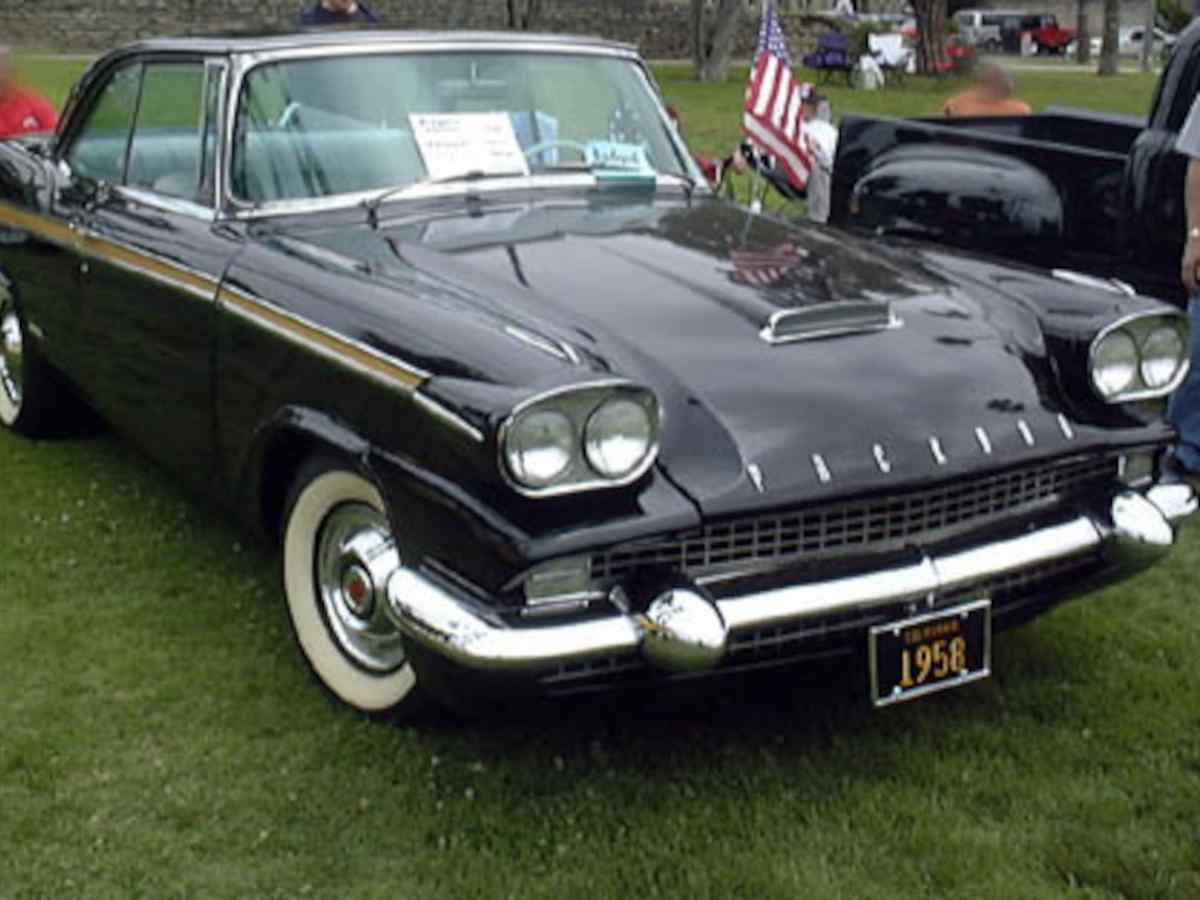
Packard was a luxury automobile manufacturer known for its high-quality, innovative vehicles. Founded in Warren, Ohio, it quickly became synonymous with American luxury. Packard introduced the modern steering wheel and the H-pattern gear shift.
During World War II, they produced aircraft engines. Post-war, Packard struggled to compete with the "Big Three" - GM, Ford and Chrysler. In 1954, they merged with Studebaker, but financial difficulties persisted. The last true Packard was produced in 1956, with the name briefly used on rebadged Studebakers until 1958. Packard's demise marked the end of an era in American luxury automobiles.
Studebaker (1852-1966)

Studebaker began as a wagon manufacturer in 1852, transitioning to automobiles in 1902. Known for innovative designs, they produced the popular Champion and the iconic Avanti. Studebaker was the only company to successfully switch from horse-drawn to gasoline-powered vehicles.
During World War II, they manufactured aircraft engines and military vehicles. Despite innovative models, financial troubles led to a merger with Packard in 1954. The company continued to struggle, closing its South Bend, Indiana plant in 1963. Production briefly continued in Canada until 1966. Studebaker's legacy lives on in its unique designs and its long history in American transportation.
Pontiac (1926-2010)

Pontiac, a division of General Motors, was known for performance vehicles and youthful image. Initially created as a companion make for Oakland, Pontiac outlived its parent brand. It gained popularity in the 1960s with models like the GTO, often credited as the first muscle car.
The Firebird and Trans Am became cultural icons. However, in the 1980s and 1990s, Pontiac struggled with brand identity, shifting between performance and economy cars. Despite attempts to revitalize the brand with models like the Solstice, GM discontinued Pontiac in 2010 during its post-financial crisis restructuring, ending an 84-year legacy of American performance cars.
Oldsmobile (1897-2004)
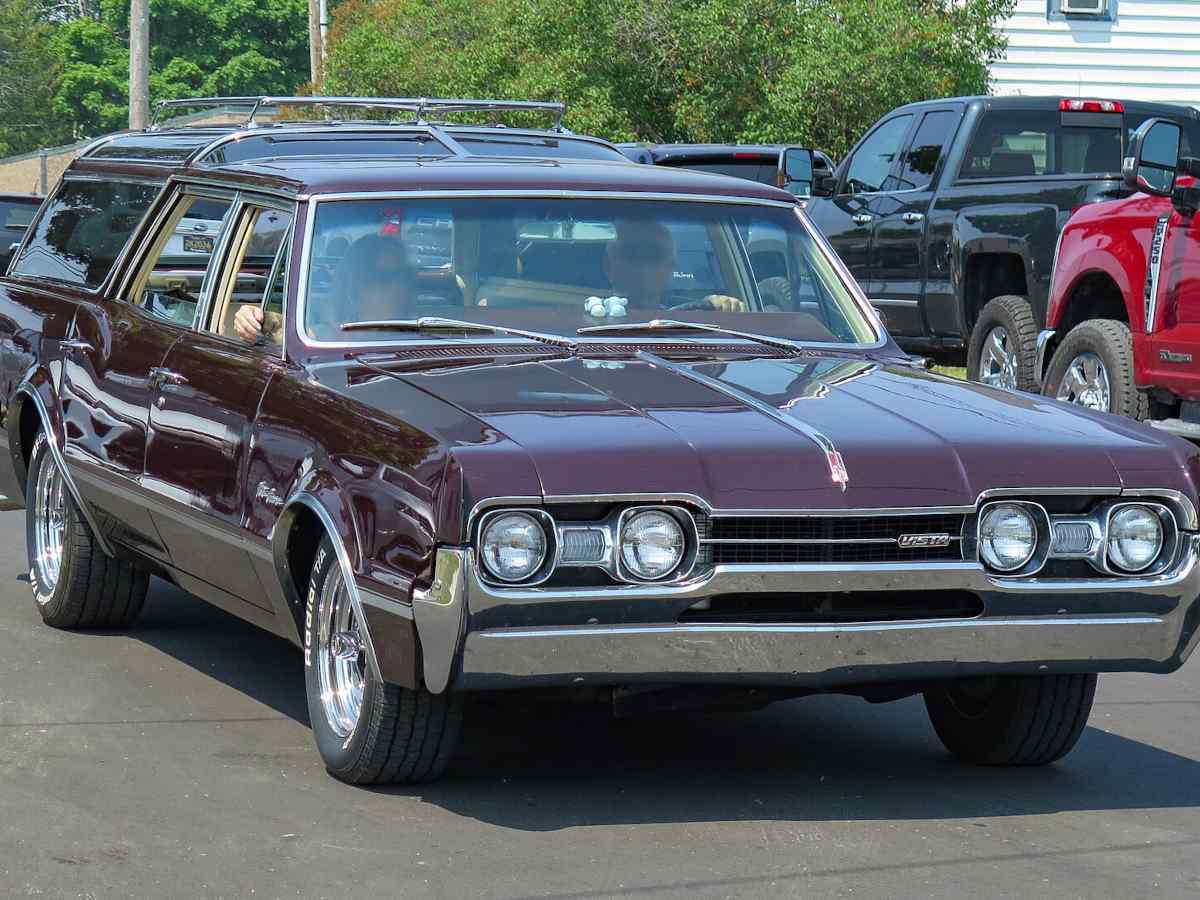
Oldsmobile, founded by Ransom Olds, was one of the oldest car brands in the world. It became part of General Motors in 1908. Oldsmobile was known for innovations like the first mass-produced automatic transmission (Hydra-Matic) in 1940. The brand was positioned between Chevrolet and Cadillac in GM's hierarchy. Famous models included the Cutlass and the 442 muscle car.
In the 1980s, Oldsmobile attempted to rebrand with the slogan "This is not your father's Oldsmobile." However, declining sales and brand confusion within GM led to its discontinuation in 2004, marking the end of America's oldest automotive brand.
Plymouth (1928-2001)
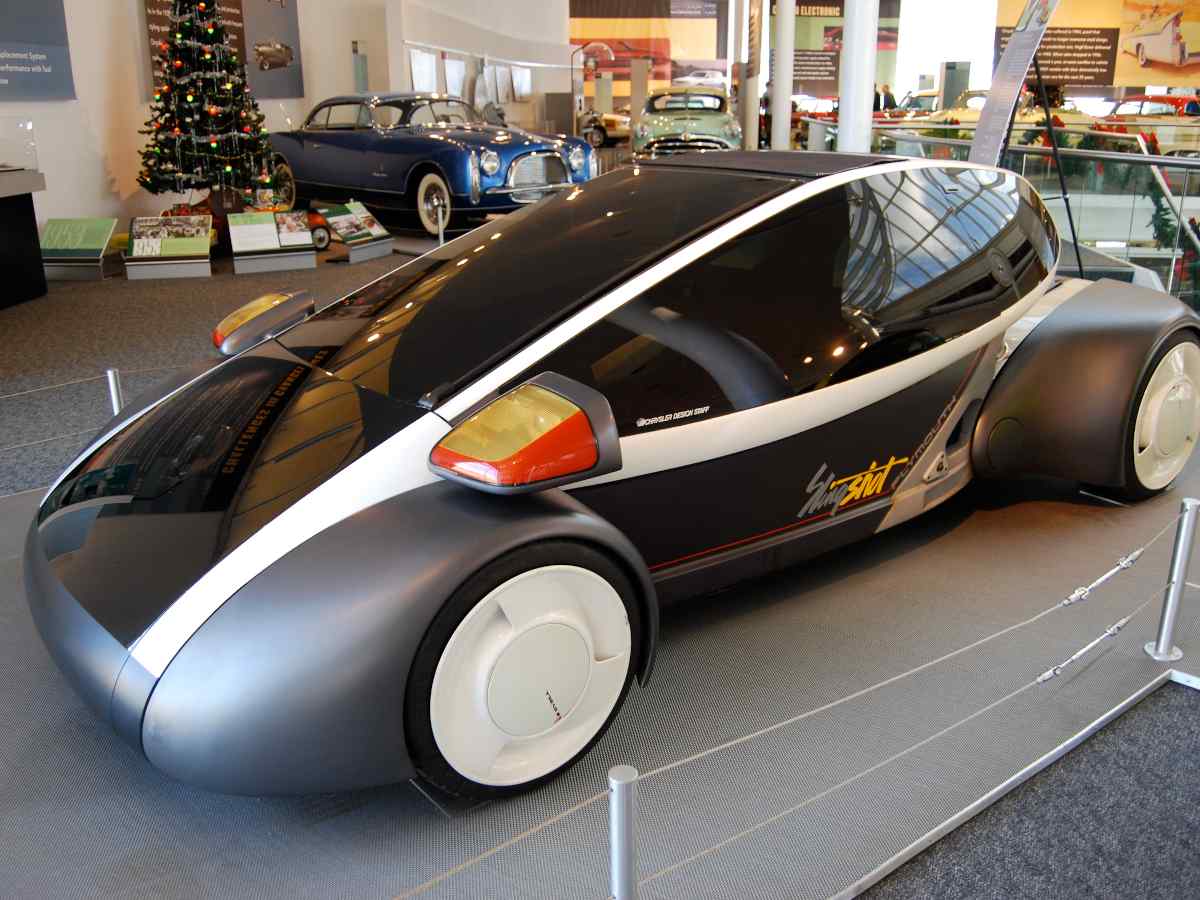
Plymouth was created by Chrysler as a lower-priced brand to compete with Ford and Chevrolet. It quickly became successful, helping Chrysler weather the Great Depression. Plymouth was known for affordable, reliable cars and introduced innovations like floating power engine mounts. In the 1960s and 1970s, Plymouth gained performance credibility with models like the Road Runner and Barracuda.
However, brand overlap within Chrysler and declining sales led to its demise. The last Plymouth, a Neon, rolled off the assembly line in 2001. Plymouth's 73-year history represented the evolution of American mainstream automobiles.
DeSoto (1928-1961)
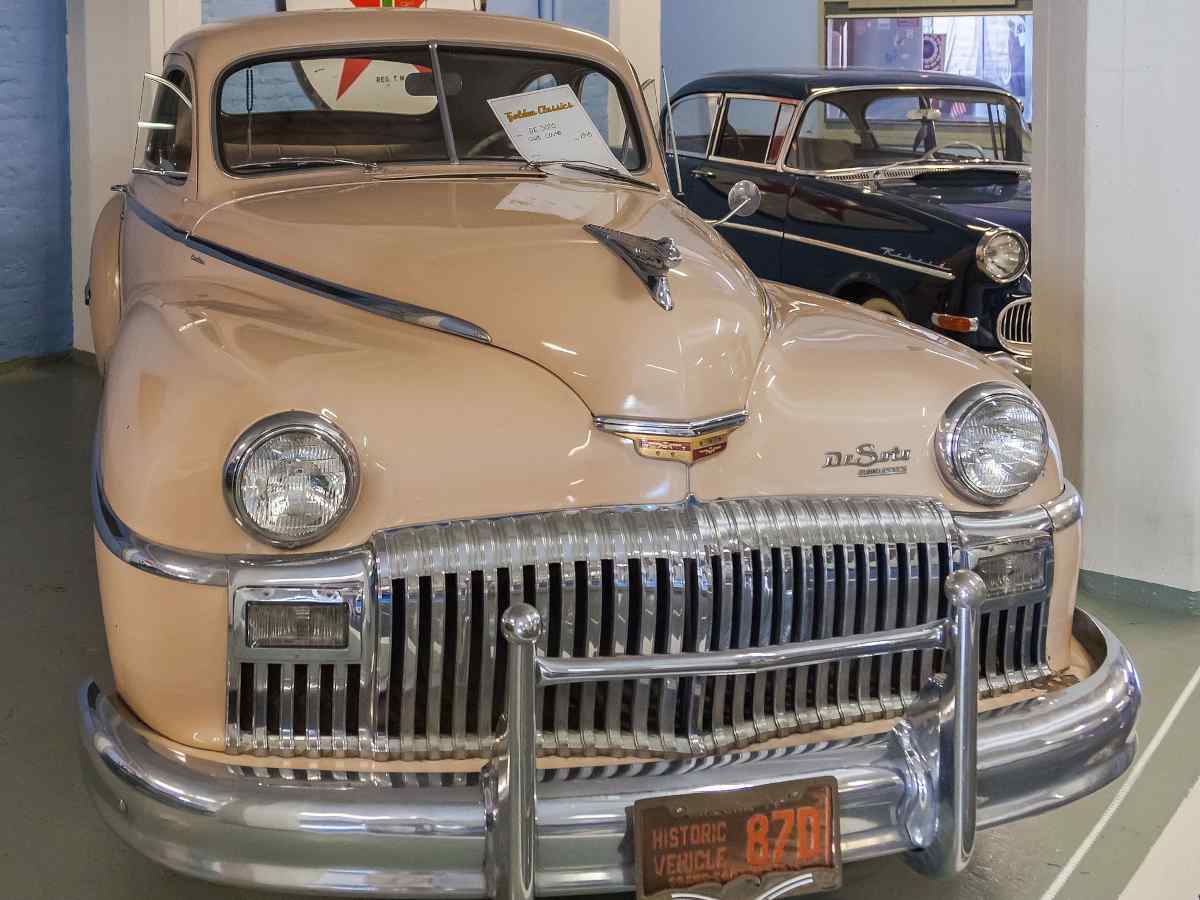
DeSoto, named after Spanish explorer Hernando de Soto, was created by Chrysler to compete in the mid-price field. It initially sold well, setting a first-year sales record for a new brand. DeSoto was known for innovations like hidden headlights and the Airflow model's aerodynamic design.
During the 1950s, DeSoto faced increasing competition and brand confusion within Chrysler's lineup. The 1958 recession hit the mid-priced car market hard. Despite introducing the impressive Adventurer in 1956, sales continued to decline. Chrysler discontinued DeSoto in 1961, after only 3,034 1961 models were produced, ending a 32-year run.
Nash (1916-1957)
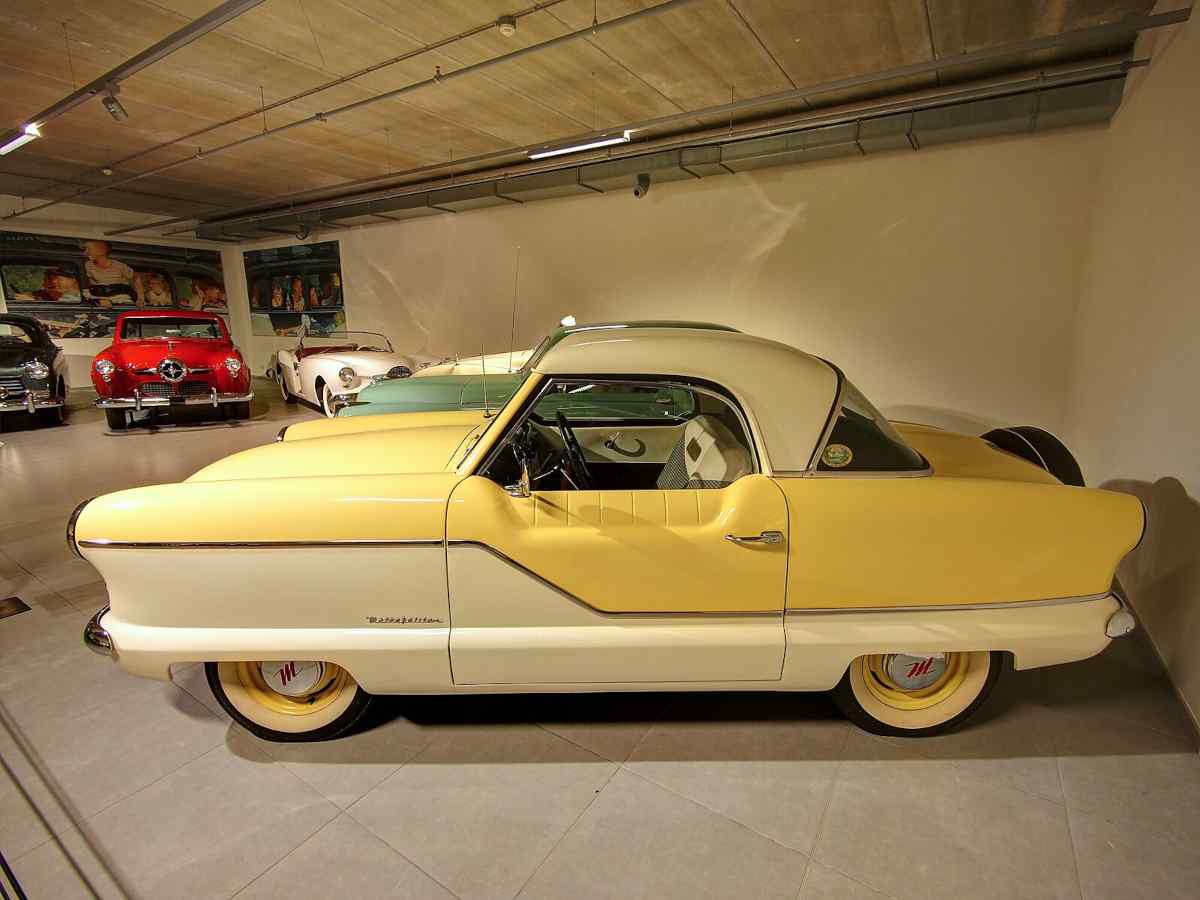
Nash Motors, founded by former GM president Charles W. Nash, was known for innovative, economical cars. They introduced important features like heating/ventilation systems and unibody construction. Nash merged with Kelvinator in 1937, becoming Nash-Kelvinator. Post-World War II, Nash introduced the compact Rambler and the unique Nash-Healey sports car.
In 1954, Nash merged with Hudson to form American Motors Corporation (AMC). The Nash brand was discontinued in 1957, but its legacy continued in AMC products. Nash's focus on efficiency and innovation influenced the American auto industry long after the brand's demise.
Hudson (1909-1957)
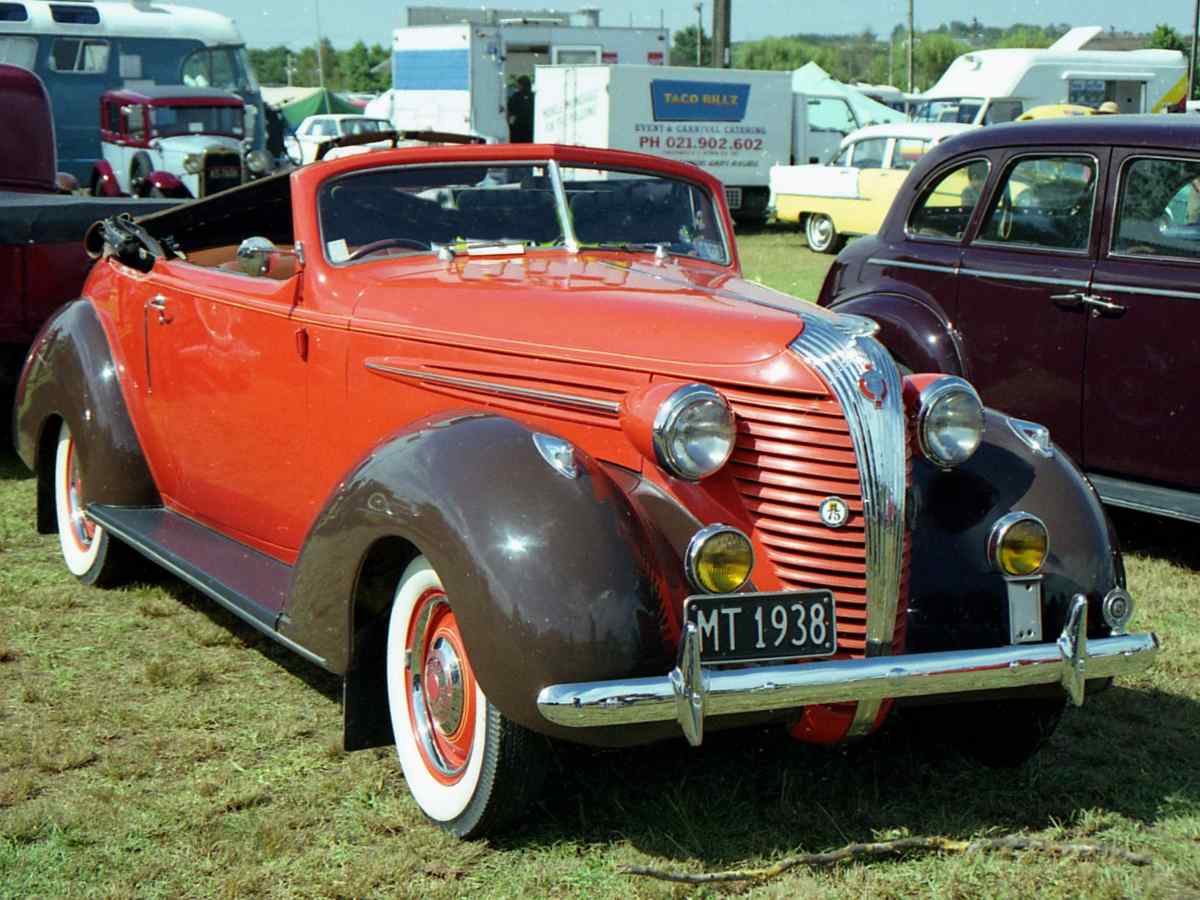
Hudson Motor Car Company was known for its innovative "step-down" design, which lowered the passenger compartment for improved handling and safety. Hudson cars dominated early NASCAR racing. The company introduced the first balanced crankshaft, allowing their engines to run more smoothly at higher speeds.
Hudson struggled financially in the post-World War II market. In 1954, Hudson merged with Nash-Kelvinator to form American Motors Corporation (AMC). The Hudson brand was discontinued in 1957, but its racing legacy and innovative designs left a lasting impact on automotive history.
Rambler (1950-1969)

Rambler began as a model name under Nash, becoming its own marque under American Motors Corporation (AMC) in 1958. It was instrumental in establishing the American compact car segment. Ramblers were known for fuel efficiency and practical design, often featuring reclining seats that could be made into a bed.
The brand's peak came in 1963 when the Rambler Classic was named Motor Trend Car of the Year. However, as larger cars regained popularity in the late 1960s, AMC phased out the Rambler name. The last Rambler-branded car was produced in 1969, but its legacy in compact car design continued.
Kaiser-Frazer (1945-1955)

Kaiser-Frazer was formed after World War II by Henry J. Kaiser and Joseph W. Frazer. They capitalized on the post-war demand for new cars, quickly becoming the fourth-largest American car manufacturer. Kaiser-Frazer was known for modern styling and innovations like safety padded dashboards. The compact Henry J was an early attempt at an economy car.
However, the company struggled against the Big Three automakers. Frazer left in 1951, and the Frazer marque was discontinued. Kaiser continued until 1955, when it merged with Willys-Overland to focus on Jeep production. Kaiser-Frazer's brief existence highlighted the challenges faced by independent automakers in post-war America.
Checker (1922-1982)

Checker Motors Corporation was best known for its iconic taxicabs, particularly in New York City. The company's most famous model, the Checker Marathon, remained largely unchanged from 1956 to 1982. Checkers were known for their durability, spacious interiors, and distinctive design. While primarily focused on taxis, Checker also sold cars to the public.
The company struggled as major automakers entered the taxi market with more modern, efficient vehicles. Checker ceased automobile production in 1982 but continued producing parts for other manufacturers until 2009. The Checker taxi remains a symbol of mid-20th century American urban life.
Terraplane (1932-1938)
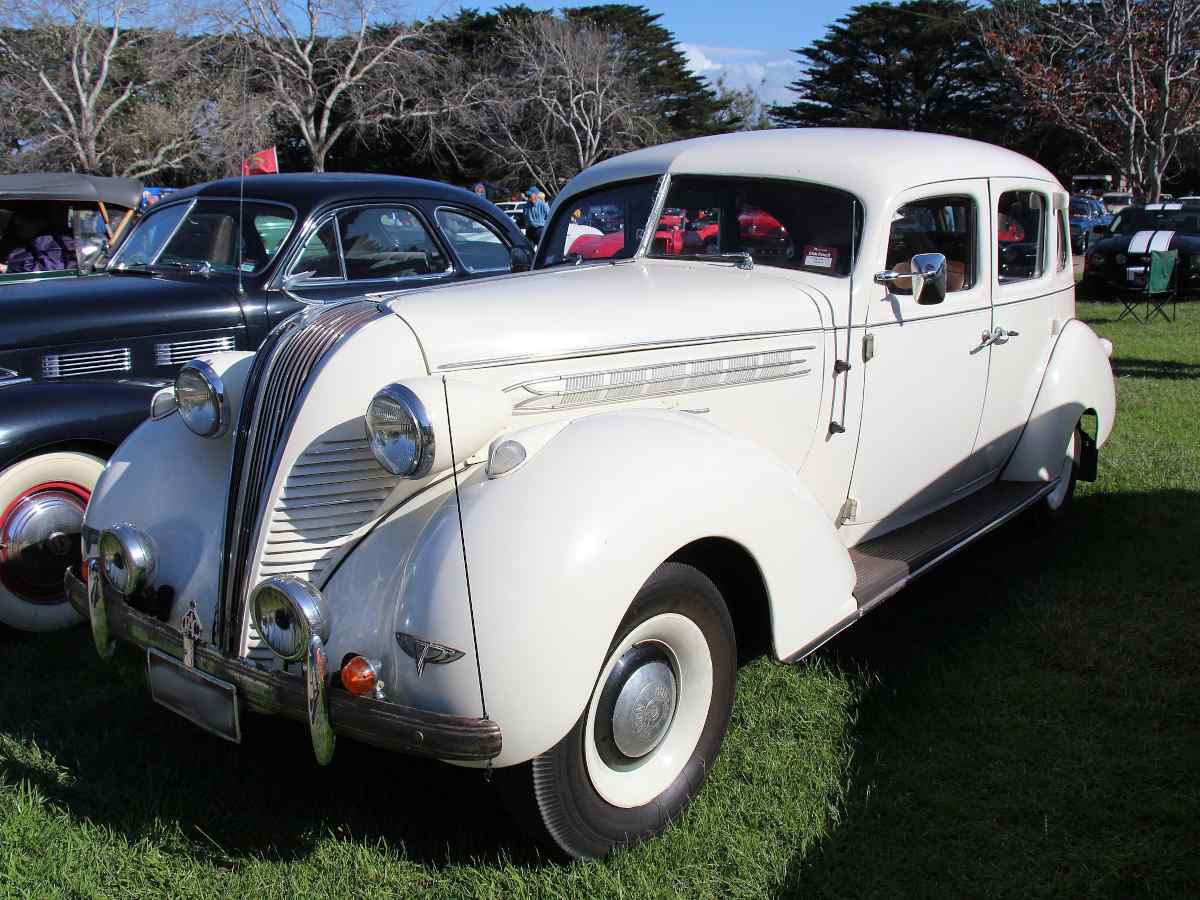
Terraplane was a brand of Hudson Motor Car Company, introduced during the Great Depression as a lower-priced companion to Hudson models. The name was inspired by the popularity of aviation, suggesting speed and adventure. Terraplanes were known for their performance, setting numerous speed records.
They featured innovative designs like unit-body construction and were among the first cars to have dash-mounted gear shifts. Despite initial success, Hudson discontinued the Terraplane brand in 1938, incorporating its features into Hudson-branded vehicles. Though short-lived, Terraplane contributed significantly to Hudson's reputation for performance and innovation in the 1930s.
La Salle (1927-1940)
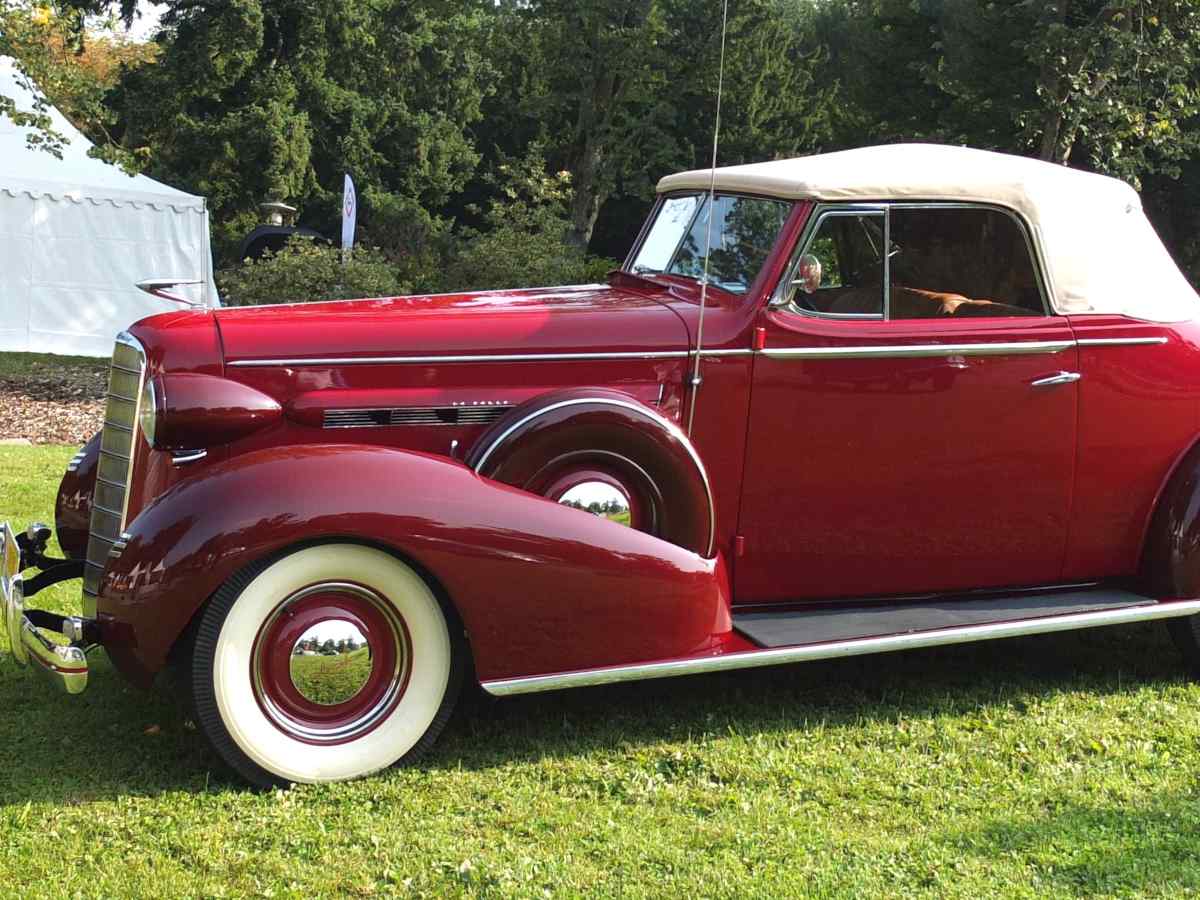
La Salle was created by General Motors as a companion marque to Cadillac. Named after French explorer René-Robert Cavelier, Sieur de La Salle, it was designed to fill the price gap between Buick and Cadillac. La Salle was known for its stylish designs, often setting trends for the entire GM lineup. The brand introduced the modern car annual model change.
Despite its attractive designs and Cadillac-level quality, La Salle struggled during the Great Depression. As Cadillac introduced lower-priced models, La Salle became redundant. GM discontinued the brand in 1940, but La Salle's influence on automotive styling continued long after its demise.
Marmon (1902-1933)

Marmon Motor Car Company was known for its luxury and innovations. They introduced the rear-view mirror and the V16 engine to American automobiles. Marmon's most famous achievement was winning the first Indianapolis 500 in 1911 with the Marmon Wasp. In 1929, they introduced the revolutionary Marmon Sixteen, featuring an all-aluminum V16 engine.
However, the Great Depression severely impacted luxury car sales. Despite the impressive Sixteen, Marmon couldn't survive the economic downturn and ceased automobile production in 1933. Marmon's legacy lives on in its engineering innovations and its significant contributions to early American automotive and racing history.
Duesenberg (1913-1937)

Duesenberg was synonymous with ultimate luxury and performance in pre-war America. Founded by brothers Fred and August Duesenberg, the company started by producing race cars. Duesenberg's racing successes included victories at the Indianapolis 500 and the French Grand Prix. In 1926, E.L. Cord acquired the company, leading to the creation of the famous Model J.
With its supercharged 320 horsepower engine, the Duesenberg SJ was the most powerful and expensive American car of its time. Despite its engineering excellence, Duesenberg couldn't survive the Great Depression, ceasing production in 1937. It remains one of the most revered names in automotive history.
Mercury (1938-2010)

Mercury, Ford's "middle child" brand, was introduced in 1938 to bridge the gap between the everyday Ford and the luxurious Lincoln. It was designed to offer style and performance at an affordable price.
For decades, Mercury thrived with models like the Cougar, Marauder, and the Monterey, becoming a favorite for drivers who wanted something with a little more flair than a typical Ford.
However, by the 2000s, Mercury’s role became muddled as Ford’s lineup expanded. Sales declined, and the brand lost its distinct identity. After years of dwindling popularity, Mercury was put to rest in 2010, leaving behind a legacy of sleek designs and a few beloved models that still turn heads at classic car shows.
Tucker (1944-1948)

Tucker was the brainchild of Preston Tucker, a visionary determined to revolutionize the automotive world. His “Tucker 48,” also known as the "Tucker Torpedo," boasted features way ahead of its time—such as a rear-mounted engine, a shatterproof windshield, and the iconic "Cyclops Eye" center headlight that turned with the steering wheel.
Despite its innovation, Tucker faced intense opposition from established automakers and a controversial SEC investigation. Only 51 Tucker cars were ever produced before the company folded in 1948, largely due to financial struggles and legal battles. Though short-lived, the Tucker 48 remains a symbol of creativity and what could have been, still revered by car enthusiasts and collectors today.
Crosley (1939-1952)
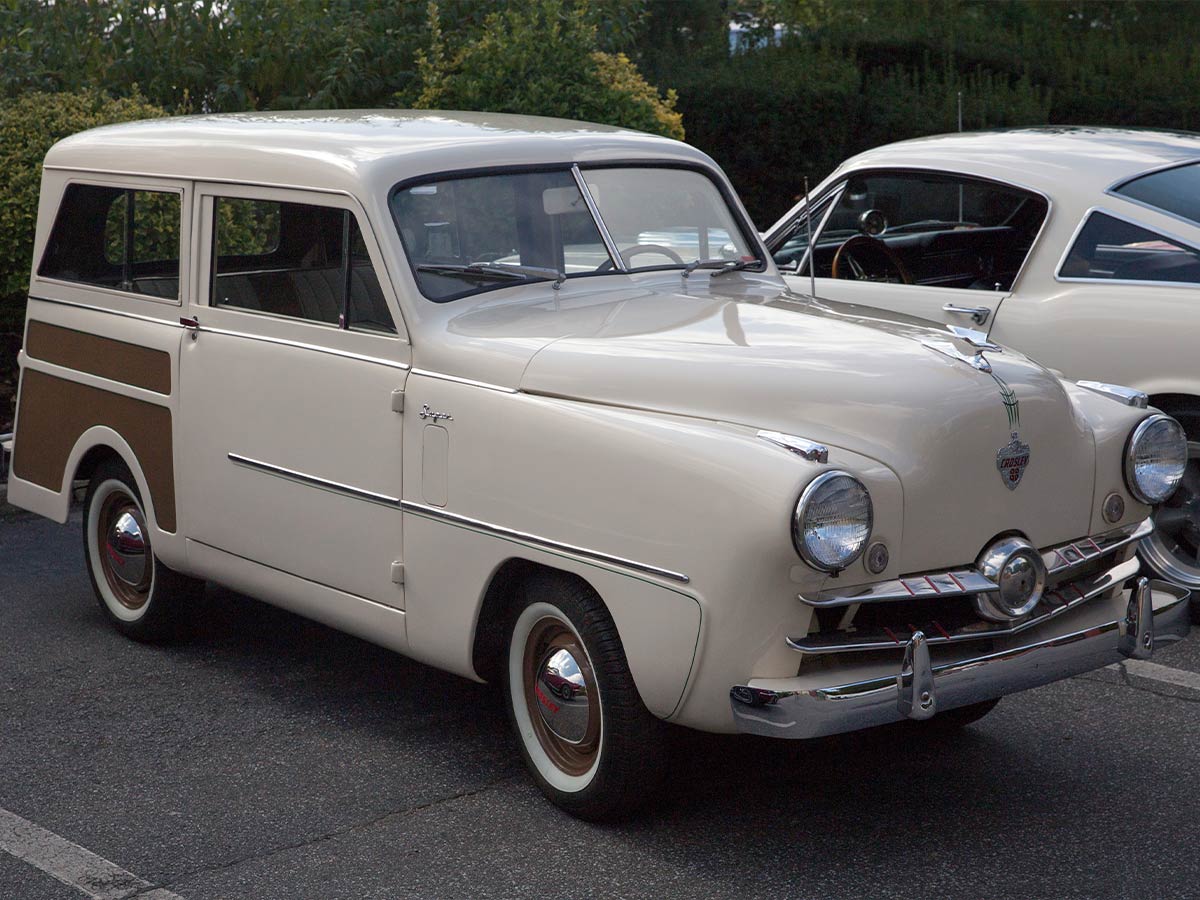
Crosley was the brainchild of Powel Crosley Jr., a man who made his fortune in radios and refrigerators before turning his sights to automobiles. The brand became known for producing tiny, affordable cars that were perfect for budget-conscious drivers, particularly during and after World War II.
Crosley models, like the Hotshot and Super Sport, were known for their lightweight design and compact size, making them economical and easy to park.
Despite initial success, the growing popularity of larger, more powerful cars in the 1950s made Crosley’s micro-sized vehicles less appealing. By 1952, with declining sales and fierce competition, Crosley shuttered its doors, leaving behind a quirky chapter in America’s automotive history.
Brewster (1810-1945)
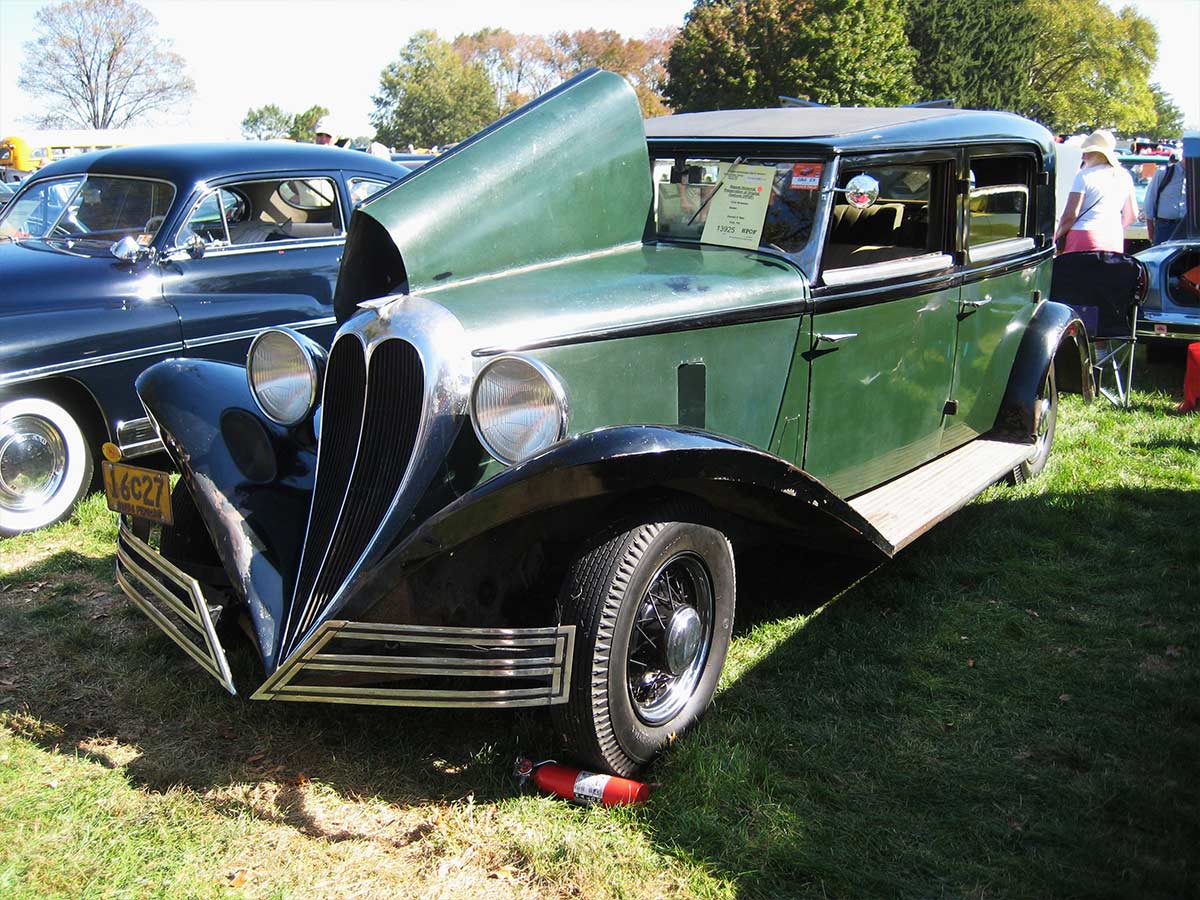
Brewster’s roots date back to 1810, making it one of America’s oldest automobile manufacturers—though it didn’t start with cars. Originally, Brewster was known for crafting high-end horse-drawn carriages for the elite. By the early 1900s, they transitioned into building luxury automobiles with meticulous craftsmanship, often hand-built and featuring custom bodies on Rolls-Royce and Ford chassis.
Alas, Brewster’s niche appeal and focus on exclusivity couldn’t withstand the Great Depression. Their final car, a quirky, bow-shaped grille model built on a Ford chassis, failed to attract buyers. The company folded in 1945, marking the end of a 135-year legacy in luxury transportation, known more for its artisanship than its mass appeal.
Hupmobile (1909-1940)
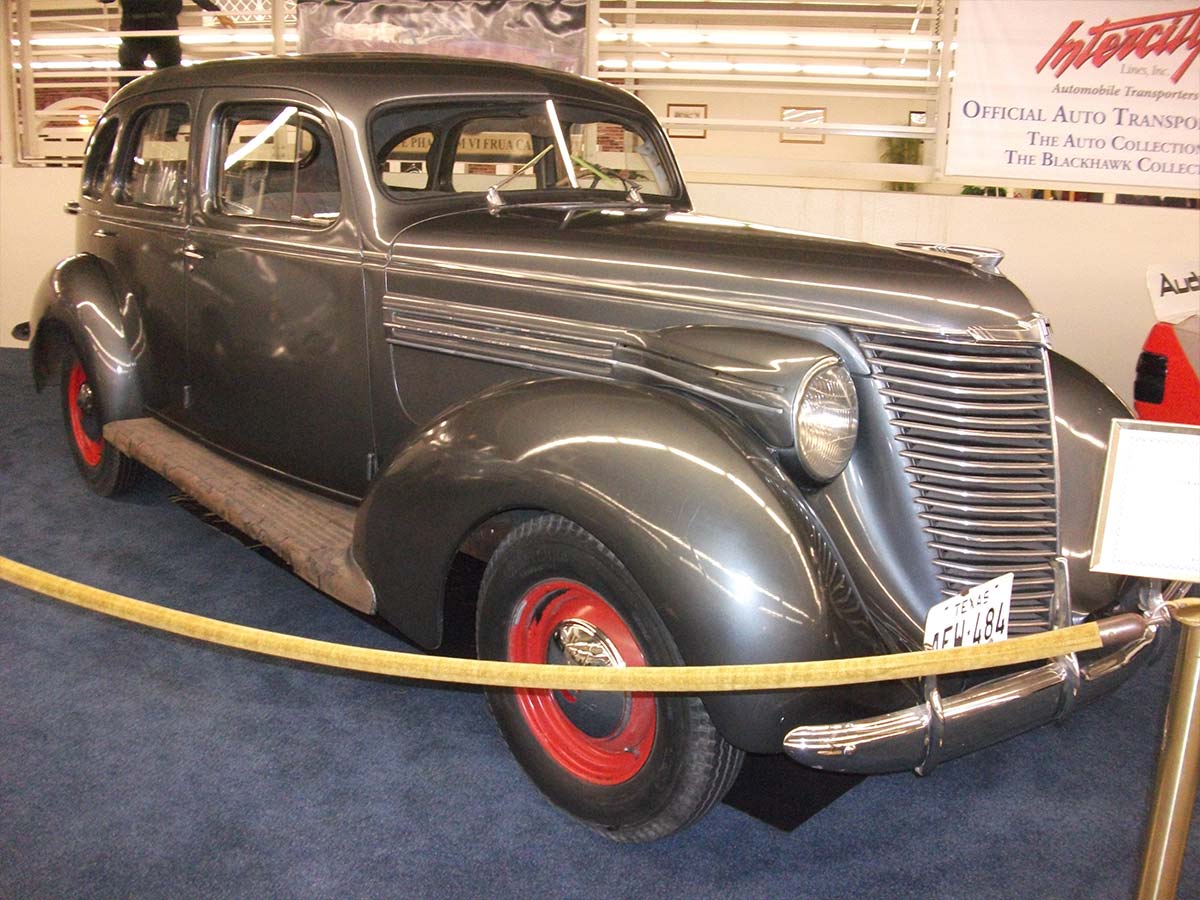
Hupmobile was the brainchild of Robert Hupp, who wanted to create affordable, reliable cars for the average American. Launched in 1909, Hupmobile quickly gained popularity for its sturdy construction and innovative designs, like the first all-steel body in the 1920s. Models such as the Hupmobile Model 20 were early favorites, offering quality at a reasonable price.
Nonetheless, the Great Depression hit Hupmobile hard, and the company struggled to keep up with the competition. In a last-ditch effort, Hupmobile even purchased Cord’s body dies to create the Hupmobile Skylark, a stylish car that resembled the Cord 810. Sadly, it wasn’t enough. Production stopped in 1940, and Hupmobile quietly drove into automotive history.
Nash (1916-1957)
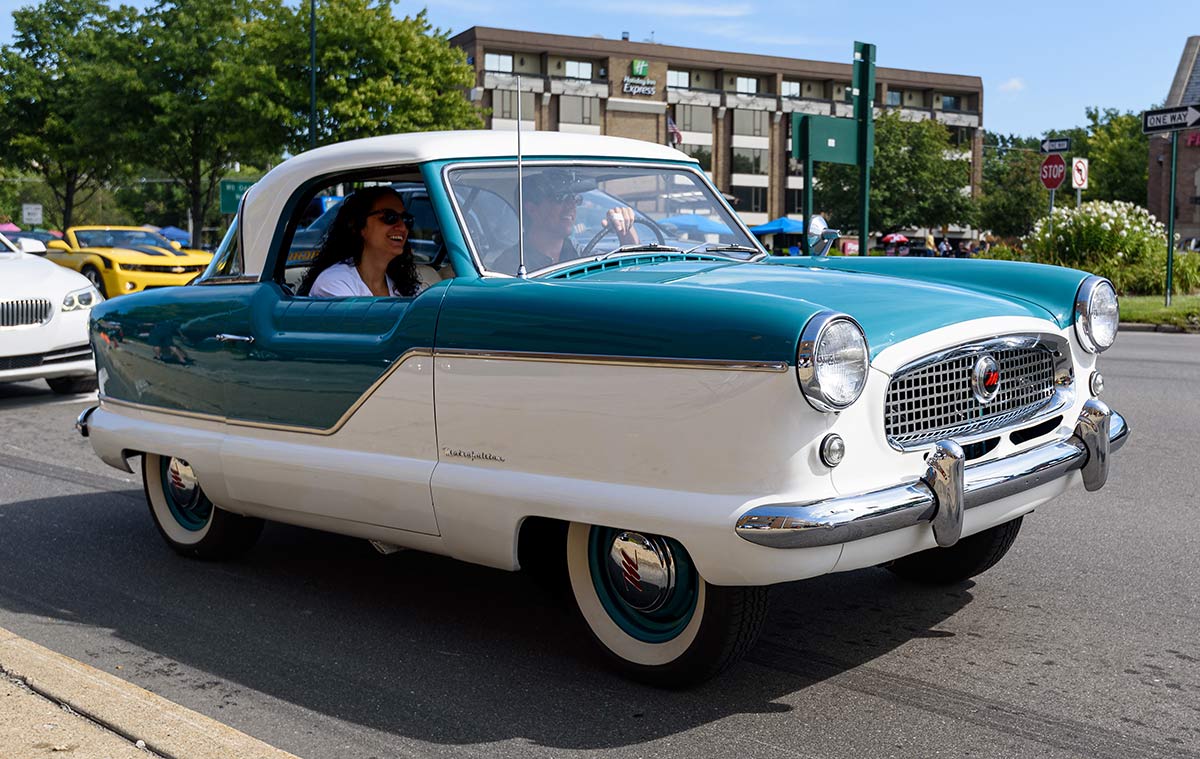
Nash Motors was founded in 1916 by former General Motors president Charles W. Nash, with a focus on producing innovative, dependable vehicles. Nash became known for forward-thinking features like the first mass-produced car with a unibody construction and their famous “Weather Eye” heating and ventilation system.
Models like the Nash Rambler and Nash Ambassador earned loyal followings for their durability and style. Despite these innovations, Nash faced challenges in a rapidly changing post-war market.
In 1954, Nash merged with Hudson to form American Motors Corporation (AMC), but the Nash nameplate didn’t last long. By 1957, the Nash brand was discontinued, though its DNA lived on in the iconic AMC cars that followed, like the Rambler and the Pacer.
Auburn (1900-1937)

Auburn began as a small horse-drawn carriage business in the early 1900s but soon transitioned into automobiles, becoming a symbol of luxury and speed during the Roaring Twenties. Known for their stunning, art deco-inspired designs, Auburn produced iconic models like the Auburn 851 Speedster, which became famous for its sleek lines and powerful performance.
These cars were as fast as they were fashionable, often topping 100 mph, an impressive feat for the era. Yet still, the Great Depression hit Auburn hard. Despite innovative models and stunning designs, the brand couldn’t sustain sales during such economic turmoil. By 1937, Auburn closed its doors, leaving behind a legacy of elegant craftsmanship and automotive innovation.
Cord (1929-1937)
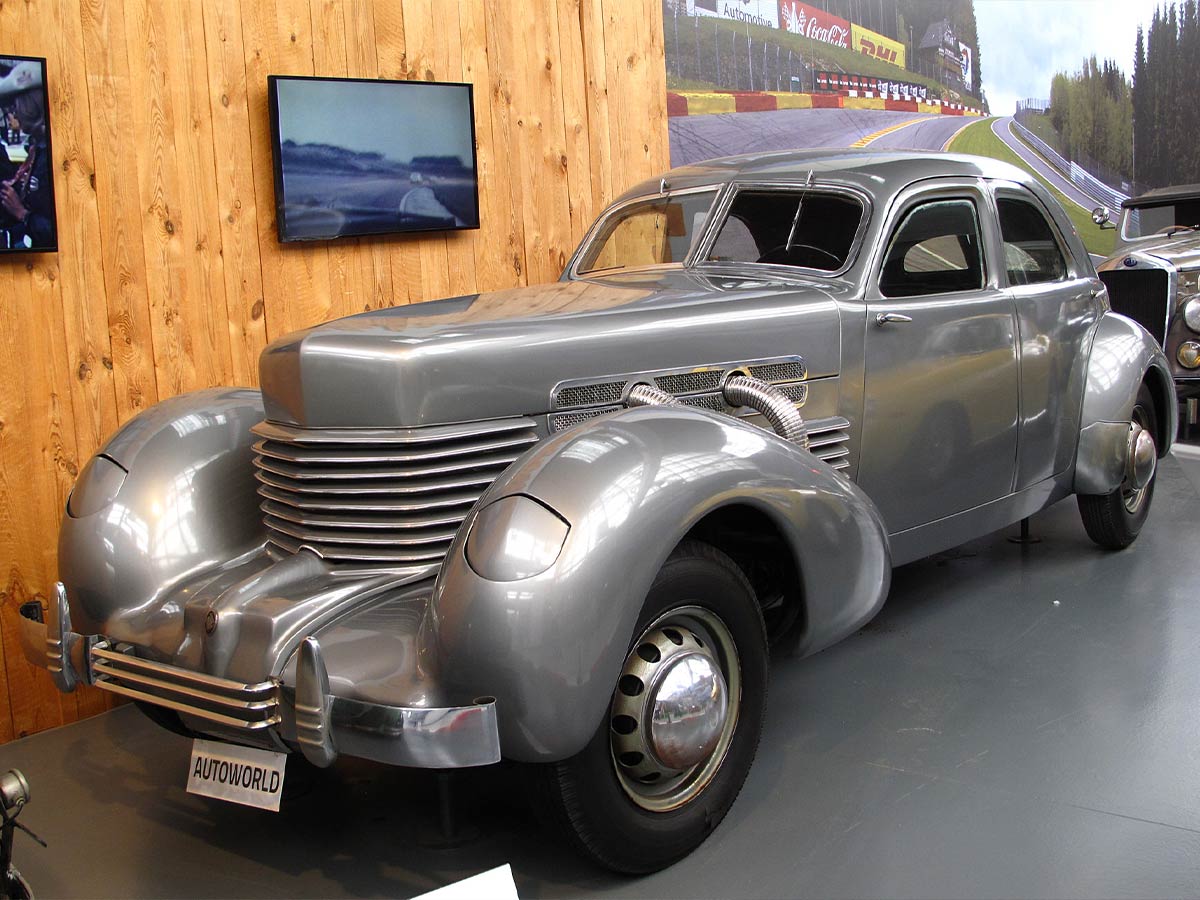
Cord was the brainchild of automotive pioneer E.L. Cord, a visionary who aimed to bring cutting-edge technology and futuristic design to the luxury car market. Launched in 1929, Cord cars were packed with innovations that left the competition in the dust.
The Cord L-29 was the first American car to feature front-wheel drive, while the stunning Cord 810/812 boasted hidden headlights, an iconic coffin-nose grille, and sleek, art deco styling.
Regardless of these groundbreaking features, Cord struggled with financial instability and production issues. The Great Depression further drained the company’s resources, and by 1937, the brand went under. Today, Cord’s legacy lives on in its trailblazing designs, cherished by collectors and automotive enthusiasts alike.
Allard (1945-1966)

Allard, a British-American hybrid car brand founded by Sydney Allard, was all about raw power and performance. Known for stuffing big American V8 engines, like those from Cadillac and Ford, into lightweight British sports car bodies, Allard produced some of the most thrilling and fast road cars of its time.
The Allard J2, in particular, became a favorite among racers and thrill-seekers, dominating early 1950s motorsports, including Le Mans.
Even with its impressive performance credentials, Allard struggled with limited production and a niche market. By the 1960s, competition from larger manufacturers with more resources spelled the end. Allard ceased production in 1966, but its reputation as a pioneer of the muscle car concept lives on.
Facel Vega (1954-1964)

Facel Vega was the epitome of French luxury and performance in the 1950s and ’60s, founded by Jean Daninos. Known for its glamorous, hand-built cars, Facel Vega blended elegant design with raw American V8 power under the hood, usually from Chrysler.
The Facel Vega HK500, with its sleek lines and lavish interiors, became a favorite of celebrities like Pablo Picasso and Ringo Starr, oozing exclusivity and style.
However, despite its A-list clientele, Facel Vega faced challenges with reliability and the high cost of production. The final blow came with the Facel Vega Facellia, which had significant mechanical issues. By 1964, the brand was no more, but its rare, exquisite cars remain highly prized collector's items today.
 Author
James Stephens
Last Updated: November 01, 2025
Author
James Stephens
Last Updated: November 01, 2025